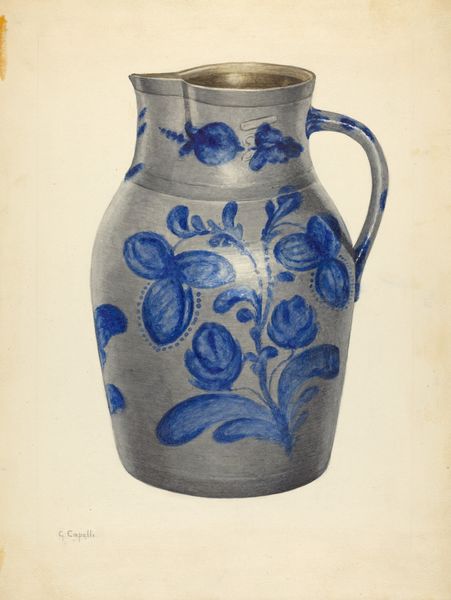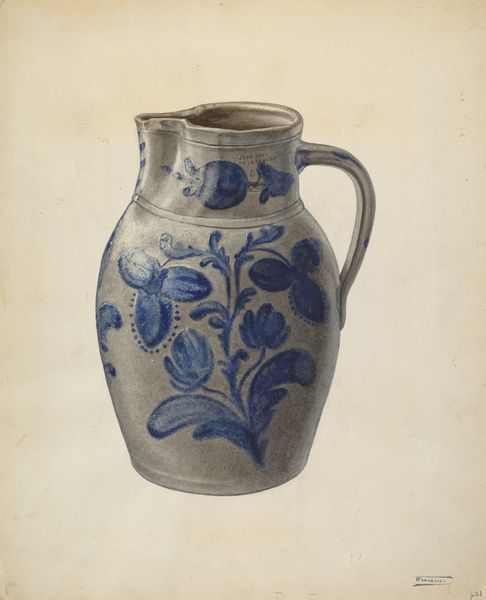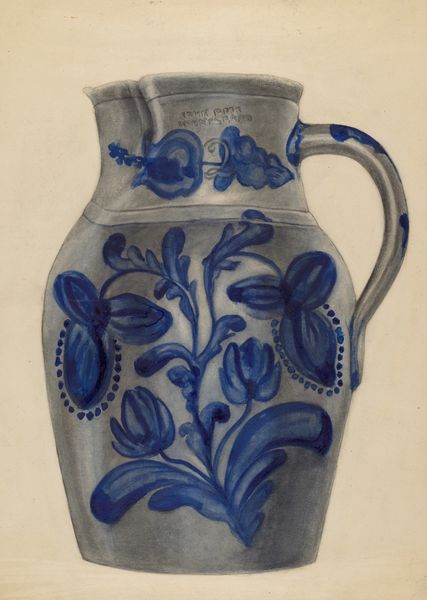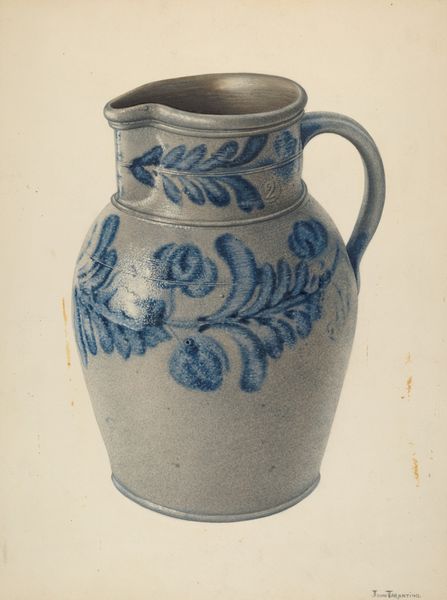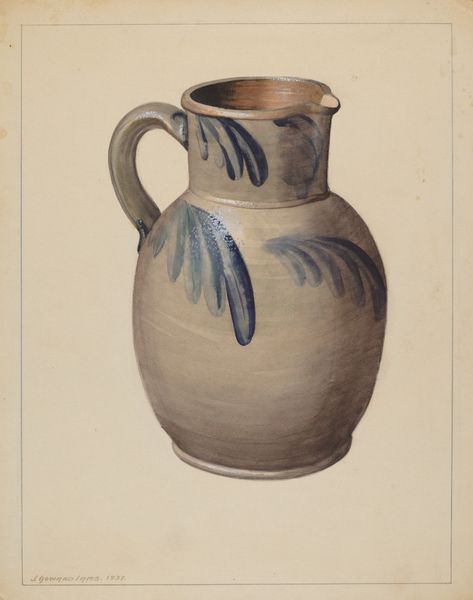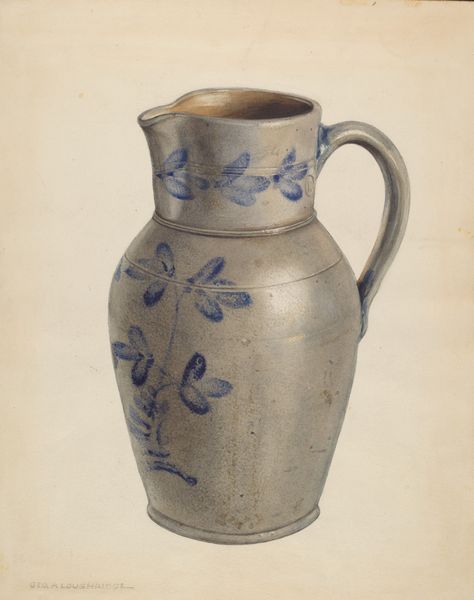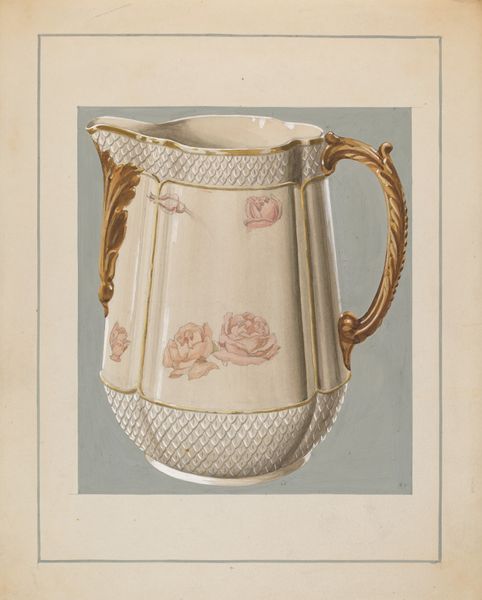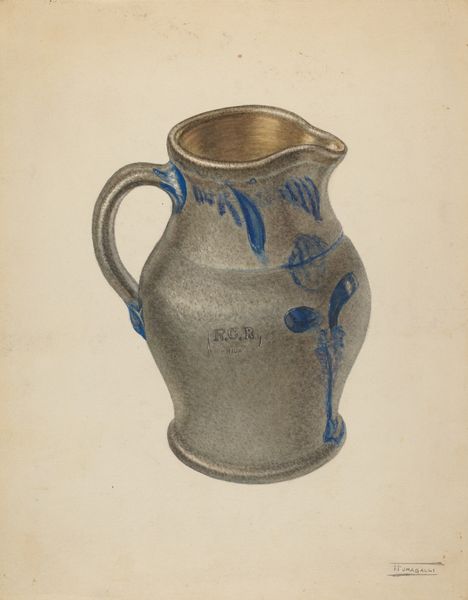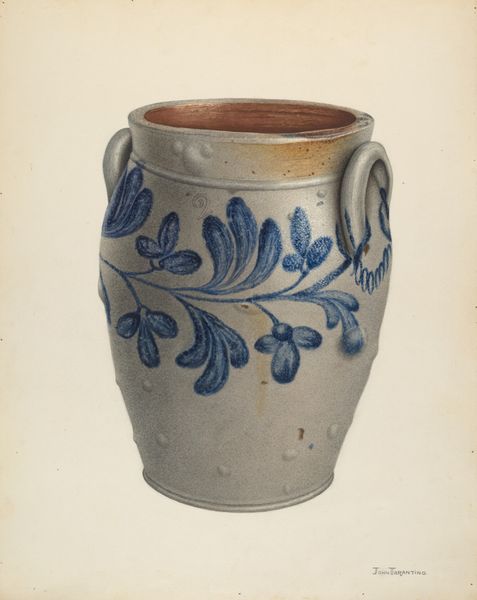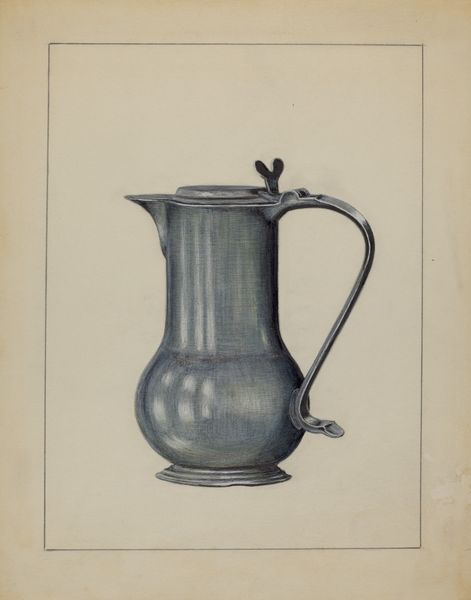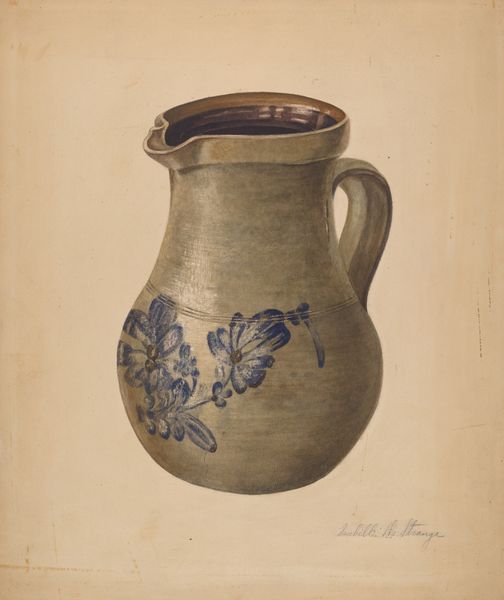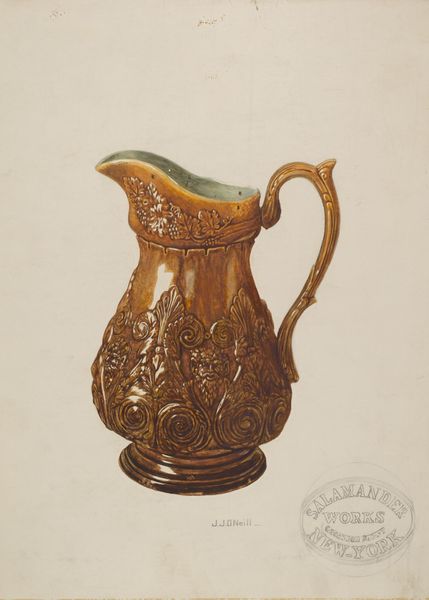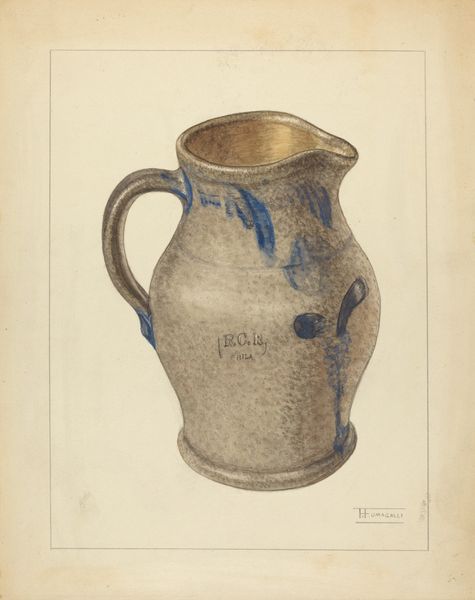
drawing, ceramic, watercolor, earthenware
#
drawing
#
decorative element
#
water colours
#
ceramic
#
watercolor
#
earthenware
#
ceramic
#
earthenware
#
watercolour illustration
#
decorative-art
#
watercolor
Dimensions: overall: 30.5 x 23 cm (12 x 9 1/16 in.) Original IAD Object: 7 1/2" High
Copyright: National Gallery of Art: CC0 1.0
Curator: We're looking at an image here, a rendering of a “Parian Pitcher” dating back to around 1937, by John Matulis. Editor: The first thing that strikes me is how restrained and elegant it is. The color palette is minimal—primarily a muted blue with the raised designs picked out in white—and the lines are incredibly precise, aren’t they? It has a rather classical feel to it, almost Wedgwood-esque in its refinement. Curator: It certainly evokes the spirit of Wedgwood. The white sprigging against the blue ground directly references Josiah Wedgwood's jasperware. In terms of cultural memory, such design is laden with associations of Neoclassical ideals and aristocratic taste. Editor: And, of course, there’s the pitcher itself. The form is very clean, utilitarian, yet elevated. One has to wonder about the labour involved in producing this piece, especially the seemingly delicate application of the sprigging, and what it signifies about the production practices of the period. It looks to be earthenware. How common would these decorative wares have been at the time? Curator: Pieces such as this represented more than mere utility; they signified cultural aspirations and social standing. Water lilies frequently symbolize purity, enlightenment, and rebirth. So this isn’t just a pitcher; it’s a vessel embodying values and aesthetic ideals of the time. Editor: Absolutely. It’s not just a decorative object, it’s an item manufactured to create symbolic capital and elevate those values. What’s most compelling about it, though, is the rendering itself. Watercolors and drawings aren't permanent so you’d have to see the physical jug at the time of manufacture, right? It creates an intimate snapshot for this singular jug from that period. It makes it appear unique which is almost oppositional to how such decorative artworks were actually produced! Curator: Precisely! Through examining seemingly modest domestic objects, we uncover cultural strata and enduring human preoccupations. Editor: I agree entirely, and the method by which the artwork came into existence. A singular work of manufacture immortalized in watercolour and graphite… I find that very charming!
Comments
No comments
Be the first to comment and join the conversation on the ultimate creative platform.
